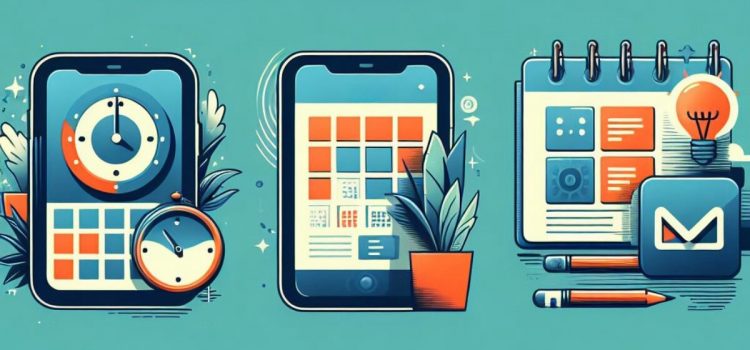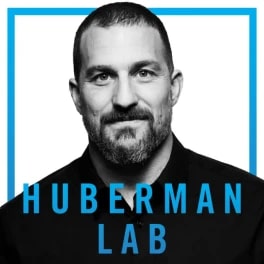

This article is an excerpt from the Shortform guide to "Huberman Lab". Shortform has the world's best summaries and analyses of books, podcasts, and more.
Like this article? Sign up for a free trial here.
Are you feeling overwhelmed by a big goal? Do you wonder how to tackle it effectively without losing your motivation?
On the Huberman Lab podcast, Dr. Andrew Huberman recommended the chunking method to help you stay motivated and reach your goals. This effective technique leverages the way your brain works.
Read on to get a summary of Huberman’s advice for chunking goals along with some application tips, context, and analysis.
The Chunking Method for Goals
Dr. Andrew Huberman, a champion of intrinsic motivation, highlighted the power of the chunking method when it comes to setting and achieving goals. Chunking goals involves breaking down daunting tasks into bite-sized, achievable segments. Imagine a four-day study schedule. By chunking it, you maintain motivation, which is crucial especially during the often-demoralizing “Wednesday slump.”
Application
Chunking is incredibly powerful for both setting and achieving goals. Here’s how it works:
Setting goals:
- Breaks down the big picture: Large, intimidating goals can feel overwhelming and paralyzing. Chunking helps you break them down into smaller, more manageable milestones. By defining these smaller steps, you gain a clearer roadmap and avoid feeling lost or overwhelmed.
- Boosts motivation: Completing smaller, achievable tasks provides consistent wins and a sense of progress. This keeps you motivated and energized, preventing the initial excitement from fading before you reach the finish line.
- Improves planning and organization: Chunking involves creating a step-by-step plan, forcing you to consider dependencies and identify potential roadblocks. This organized approach increases your chances of success.
Achieving goals:
- Improves focus and clarity: Each chunked step becomes your immediate focus, eliminating distractions and keeping you present in the moment. This laser-sharp focus helps you avoid multitasking and complete each task efficiently.
- Reduces procrastination: Smaller, less daunting tasks feel less intimidating, reducing the urge to procrastinate. You’re more likely to tackle them head-on, building momentum and preventing delays.
- Provides feedback and adaptation: Each completed chunk offers valuable feedback on your progress, allowing you to adapt your approach if needed. By analyzing your progress on smaller steps, you can identify areas for improvement and adjust your strategy accordingly.
Remember, chunking is a flexible tool. Tailor it to your specific goals and learning style. Experiment with different chunk sizes and timeframes to find what works best for you.
Context
Ever struggle to remember a long string of numbers? Enter chunking, a memory superpower. This technique groups information into meaningful units. Imagine 12 random digits: daunting, right? Chunk them into birthdates (54/05/06 & 33/12/24), and voila—only two things! That’s why credit card numbers work the same way.
Barbara Oakley explains chunking in the context of learning: Everything you know is stored in “chunks.” This condenses and organizes information for smoother processing and long-term storage. So, what’s a chunk?
Physically, a chunk is a group of interconnected neurons firing together. Learning strengthens these connections. Oakley cites a study where experts showed distinct brain activity patterns compared to novices, reflecting chunk formation (working memory for novices, retrieval from long-term memory for experts).
Conceptually, a chunk is a group of interconnected ideas. Your brain seeks meaning, connecting new information to what you already know. The stronger the chunk, the more intuitive and space-efficient it becomes.
Think of learning to drive stick shift. Initially, each step (clutch, gear shift, RPMs) feels separate. But, once mastered, you effortlessly cruise in third gear without recalling individual actions. Your brain has chunked them into one intuitive unit.
This powerful technique was discovered by George Miller in the 1950s. He observed limited human ability to distinguish sensory inputs (around seven levels for sounds or colors). Initially, he likened this to computer memory, where more bits (memory slots) allow for finer distinctions.
Applying this to humans, Miller calculated a theoretical “sensory memory bank” of 2.8 bits based on distinguishing seven levels. He also observed a seven-item limit for memorizing things such as numbers or words. But, unlike bits, letters have varying information content, making a consistent “bit” measure impossible.
So, Miller introduced “chunks” as the working memory unit. While we can hold about seven chunks, the number of “bits” they contain varies. He proposed that chunking organizes information into increasingly complex units over time. As you learn, initial information overload gets chunked, freeing up space for more. Oakley echoes this notion, highlighting how chunking expands your working memory’s capacity.
More Perspectives
Chunking tasks is a powerful motivator, but it’s not a one-size-fits-all solution. Certain goals might thrive on a broader, more connected approach, rather than being dissected into bite-sized pieces. Remember, we all learn and work differently. The key to staying motivated lies in flexibility, not sticking to a single method. Explore different approaches to find what fuels your unique fire.
Related Reading
How to Set Goals and Achieve Them: 10 Strategies for Success – BetterUp
Learn how to leverage your natural strengths to determine your next steps and meet your goals faster. Take the five-minute quiz.
Goal Pursuit | The Oxford Handbook of Human Motivation | Oxford Academic
With respect to goal implementation, we first refer to studies on the determinants of effective goal striving (e.g., the framing of the set goal in terms of approach vs. avoidance) and then turn to analyzing the effective self-regulation of goal implementation.
How to Increase Motivation & Drive – Huberman Lab
This episode explains the science of motivation and drive. Dr. Huberman describes how dopamine, a chemical we all make in our brain, underlies our desire for and pursuit of our goals, as well as our capacity to move and experience pleasure.
Smarter Faster Better by Charles Duhigg
Many of us wish that we could become more productive, or increase the productivity of our organization. However, it’s not always clear how to do this. You may believe that you simply need to work longer hours or push yourself to work harder. But, doing so won’t necessarily increase your productivity. Instead, you need to make smarter decisions about how you motivate yourself, focus, set goals, and use data effectively.
Smarter Faster Better explores the choices we can make to boost personal and organizational productivity. Learn how to build a productive team, how combining different types of goals can increase your productivity, and how the makers of Disney’s Frozen avoided box-office disaster by innovating productively.
Whether you’re unhappy at work, interested in another field, or worried your job will become obsolete, it’s never too late to make a career change. Barbara Oakley asserts that whatever your age or occupation, you can have a mindshift, which means opening up new opportunities through transformative learning. In Mindshift, she writes that it’s possible to overcome perceived barriers—such as age, imposter syndrome, or a lack of money—and gain new skills so you can reinvent yourself.
Oakley is proof that it’s possible to make a big change and flourish despite presumed weaknesses. She grew up thinking she was bad at math and science but developed a passion for those subjects later in life, obtaining a Ph.D. in Electrical Engineering.
In our guide to this book, we discuss why it’s important to have a mindshift in the modern world. Then we outline Oakley’s strategies for overcoming perceived limitations so that you can have your own mindshift. We also supplement Oakley’s ideas with other experts’ tips for supercharging your learning and maximizing your potential.
A Mind for Numbers by Barbara Oakley
You might not realize it, but your brain has an extraordinary capacity for complex calculations. Simple tasks like stepping over a garden hose as you walk across your lawn require elaborate computations, and yet they seem easy because your brain does them intuitively.
Barbara Oakley wrote A Mind for Numbers to help you learn math and science well enough that they, too, become intuitive. In our guide to the book, we examine Oakley’s explanation of your brain’s natural capabilities, her strategies for remembering complex concepts more easily, her recommendations for building good study habits and avoiding procrastination, and a few other tips for succeeding in your studies. We also look at the scientific basis of her recommendations and compare her strategies to those of other experts in learning and memory.

———End of Preview———
Like what you just read? Read the rest of the world's best guides to Huberman Lab" at Shortform.
Here's what you'll find in our full Huberman Lab episode summaries:
- How science can be applied to improve your daily life
- Information about key scientific tools and how they impact society
- How technology, biology, and health are connected






